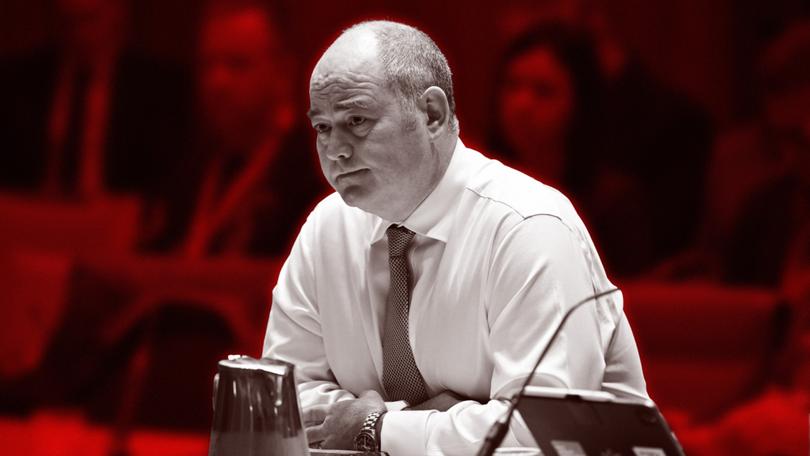NAB’s annual results paint picture of widening gulf between haves and have-nots

NAB’s annual results highlight the widening gap between the “haves” and “have-nots.”
At one end of the spectrum, the divide is geographic.
Resource-rich Western Australia, Queensland, and even the Northern Territory are in robust health. In contrast, service-led economies, particularly Victoria, are struggling.
Sign up to The Nightly's newsletters.
Get the first look at the digital newspaper, curated daily stories and breaking headlines delivered to your inbox.
By continuing you agree to our Terms and Privacy Policy.NAB CEO Andrew Irvine confirmed what many stressed mortgage holders have been lamenting: the cost of living is biting hard, and the burden of higher interest rates is squeezing household budgets.
This financial strain is rippling through the supply chain, affecting businesses from pubs and restaurants to supermarkets and all the way to the farm gate.
NAB has already suffered several bad debt write-offs from sizeable customers as the cost-of-living crisis takes hold. The bank warns that the inability of businesses to pass on rising costs is exacerbating the problem.
“We are seeing growing stress in supply chains, particularly related to the food industry, reflecting challenges in recovering higher input costs through pricing. This is impacting customers in manufacturing, wholesaling, and transport,” said NAB’s Chief Financial Officer Nathan Goonan.
While non-performing business loans remain low—around 2 per cent of the total—the bank is increasing provisions. While across the board, the uptick in doubtful debts is most pronounced in manufacturing and transport. Stress also remains elevated in hospitality, construction, and retail.
Mortgage arrears are also rising. Both 30-day and 90-day arrears have reached levels not seen since late 2021. The hardest-hit borrowers are in Victoria, which has a high proportion of manufacturing employment, and to a lesser extent, NSW.
Nevertheless, these numbers are still low—just under 2 per cent for accounts 30 days in arrears and slightly above 1 per cent for accounts 90 days in arrears.
Despite these pressures, NAB’s CEO Andrew Irvine expressed optimism, stating that the economy is at the toughest point of the cycle but is expected to recover. He highlighted strong business lending over the past year and suggested a potential rate cut in February or March could ease consumer stress.
However, a looming threat to the economy is the prospect of a trade war with China.
“I do worry about a global trade war between the two biggest economies,” Mr. Irvine said. “If tariffs are implemented, it will negatively impact the global economy and, by extension, Australia.”
Appliance maker Breville is already bracing for potential fallout from U.S.-China trade tensions. With its manufacturing based in China, Breville’s shares dropped significantly in early trade. Chief executive Jim Clayton told shareholders at the company’s annual general meeting he was rushing stock from China to the U.S. in anticipation of potential tariffs.
Meanwhile, at a Senate Estimates hearing on Thursday, Reserve Bank Governor Michelle Bullock declined to speculate on the impact of a potential trade war. However, she acknowledged the fragility of the domestic economy.
“The private sector in Australia is very weak at the moment, with public sector demand filling the gap,” Ms Bullock said.
Given the importance of resource-rich states to both GDP and government revenues, a tariff-induced slowdown in China would spell bad news for the economy and government spending, which is currently propping up both businesses and workers.
The Haves
A deeper look into NAB’s profit report reveals a few groups faring exceptionally well.
The bank identified 165,000 “mass affluent” customers as an increasingly important segment for its lending goals.
Accounts for this cohort, with incomes over $260,000 and investible assets up to $2.5 million, has grown by 28 per cent over the past four years. High house prices have presumably helped inflate away their mortgages, while interest income and strong equity markets have added to their wealth.
NAB is leveraging its large deposits as a key funding source to remain competitive in the event of another mortgage price war.
The wealthier customer base also continues to drive mortgage growth for NAB. Households with incomes between $200,000 and $500,000 accounted for just under half of investor loans, while those with incomes above $500,000 represented around 35 per cent of applications. Combined, these groups accounted for 65 per cent of owner-occupier loan applications in the six months to September.
NAB has also taken care of another important group: its shareholders. Despite a drop in profit, the bank kept its dividend effectively unchanged. In total, $5.2 billion was returned to the economy via dividends, 40 per cent of which went to retail investors and retirees.
For the sake of the broader economy, let’s hope they spend it.

